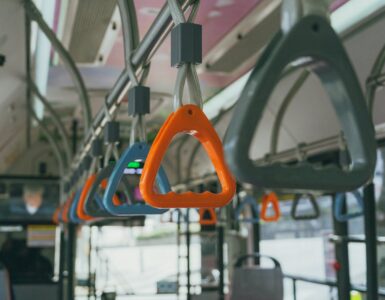The loud calls of a vendor selling hot teas at the railway platform, watching people from all different strata of society, sitting by the window seat seeing the landscape, and simply chilling during the ride, are a few of the countless things that transpire while making a journey on Indian Railways.

For most Indians, traveling on Indian trains evokes a myriad of emotions, whether it is the nostalgia of the journeys taken as a child, or being part of the process that makes the journey. The connection that trains make with millions of people is unpretentious.
Another aspect that makes railways special is the gradual evolution over a period of time. From making a modest beginning in the middle of the 19th century to becoming the fourth-largest rail network in the world, Indian railways have become the lifeline of the country’s economy. Every day, the railways carry millions of passengers and tonnes of freight on the railway track, thereby playing a huge role in India’s economic growth.
Railways by numbers
In the year 2021-2022, the railways transported freight of more than 1400 metric tonnes, which is 15% more as compared to 2020-2021, and intends to ferry 8.6 billion passengers in 2022-23.
As the Indian economy continues to rise, so is the need for the development and modernization of Indian railways. Given this importance, the Indian government continues to make massive investments in building infrastructure, improving the network, launching new high-speed trains, developing cargo terminals, etc.
To make this happen, the budgetary support for the railway ministry for 2022-23 has been increased to more than US$ 16 billion which is 28% more than the previous year.
These expansive plans for Indian railways are not only heavy from a monetary perspective, but it comes at great environmental costs. The lifeline of the Indian economy has a major impact on greenhouse gases and climate change. As per UN Climate Change, the Indian railway sector contributes to 12 percent of the country’s greenhouse gas emissions.
The good news is that the rail network has been taking steps to reduce its carbon footprint. In fact, much before India made its commitment to become net zero by 2070, India Railways had set the target to become net zero by 2030.
On June 5th, 2021, on the occasion of World Environment Day, the Indian railways declared that it is working on a mission to become a ‘net zero carbon emitter’ before 2030, which is four months before Prime Minister of India, Narendra Modi spelled India’s commitment at Glasgow Climate Summit.
Indian Railways plans for Net-Zero by 2030
A series of steps are being undertaken by the Indian railways to gradually reduce its carbon footprint and become a net zero carbon emitter by 2030.
Transition to renewable energy sources
One of the major endeavors for Indian railways is to reduce its carbon footprint by sourcing its energy requirements from renewable energy sources. As per the railway officials, to achieve Net Zero Carbon Emission, the expected requirement of renewable capacity by 2029-30 would be about 30,000 MW.
The railway intends to achieve this by increasing the share of renewable energy in its energy mix. The transporter has already made significant progress towards this target, by installing rooftop solar panels in all railway establishments. It has installed over 100 MW of solar panels (rooftop and vacant lands) and is planning to set up 20 GW of solar capacity by 2030.
In February 2023, railways launched Bina Solar Power Project, a first-of-its-kind solar plant that produces and provides solar electricity directly at 25 kV OverHead Electrical Equipment to haul trains. The project, established in collaboration with the state-owned Bharat Heavy Electricals Ltd (BHEL), directly powers the railway overhead lines, from which locomotives draw traction power.
Additionally, Indian Railways is investing in wind energy and has set up wind turbines near railway tracks. By transitioning to renewable energy sources, Indian Railways can significantly reduce its dependence on fossil fuels and decrease its carbon footprint. Till October 2022, about 103 MW of Wind power plants have been commissioned.
Electrification of railway tracks
Indian Railways plans to do 100% broad gauge electrification by December 2023. A total of 42,354 Route Kilometre has been electrified as of January 2021, making this Indian Railways world’s largest electrified railway network.
By electrifying railway tracks, Indian Railways can reduce its reliance on diesel engines, which emit significant amounts of greenhouse gases. This transition will also make trains more efficient and cost-effective in the long run.
Freight Transportation
Another major step taken by the Indian railway is the construction of dedicated freight corridors (DFCs). Dedicated Freight Corridor is aimed at energy efficiency and environment-friendly transportation and it is expected that the DFC implementation will lead to a saving of 1.5 crore tons of CO2 each year.
Dedicated freight corridors will help in the faster movement of cargo, lower costs, and higher capacity as the track will allow for double-stack containers.
Green initiatives
Another major step taken by the railways is the afforestation of vacant railway land which will act as a carbon sink. This involves planting trees and promoting green cover in and around railway stations.
Promoting sustainable practices
With the introduction of the Indian government’s flagship project, ‘Swachh Bharat’, the cleanliness of trains & railway stations has gained increased focus. Separate waste bins have been provided on railway platforms for dry and wet waste for waste segregation at the source. Emphasis is made on mechanized cleaning at stations & train coaches.
The passenger coaches are fitted with environment-friendly bio-toilets which have been developed by Indian Railways along with Defence Research & Development Organization (DRDO). This prevents the direct discharge of human waste from trains.
To reduce plastic waste, railways have introduced earthen cups (kulhads) for serving tea at railway stations and biodegradable cutlery and crockery on board trains. The Kulhads, not only save the environment but also provides jobs to thousands of people.
Additionally, it has launched a “Go Green” campaign to promote eco-friendly practices among its employees. These initiatives are aimed at creating a culture of sustainability within the railway network.
Modernization and Technology Initiatives
Indian Railways has also made investments to improve the efficiency of its engines and coaches. The railways completely switched over to the production of energy-efficient electric locomotives that comes with regenerative features. There is the provision of regeneration of electric energy while braking the train and regenerative energy is fed back to the grid.
The railway ministry is also in the works to induct digital technologies such as artificial intelligence and the Internet of Things (IoT) to keep a close watch on its greenhouse gas emissions.
Collaboration with external stakeholders
Indian Railways is collaborating with several external stakeholders to achieve its net-zero carbon emissions goal. For instance, it has signed a Memorandum of Understanding with the United Kingdom’s Foreign, Commonwealth, and Development Office (FCDO) for collaboration on energy and sustainability under its Power Sector Reforms Programme. In 2016, railways signed an MoU with the Confederation of Indian Industry (CII) for the facilitation of Green initiatives.
Additionally, it is collaborating with the United Nations Environment Programme to develop a sustainability strategy. Green Certifications of various industrial units, railway stations, and other railway establishments are also being carried out.
By working with external stakeholders, Indian Railways can leverage its expertise and resources to achieve its sustainability goals.
Use of alternate fuels
Development is also underway to introduce trains that are powered by hydrogen and solar.
The railways are set to launch India’s first hydrogen-powered train by end of 2023. To be designed and manufactured in India, the Hydrogen trains will run on hydrogen fuel cells, which will further reduce the railways’ carbon footprint.
In July 2017, railway engineers also introduced India’s first solar-powered train. However, the project was shelved as the findings indicated that solar power works only during the day and does not work properly during fog/rain and in the winter season, as the battery backup goes down.
Wrapping Up
By transitioning to renewable energy sources, electrifying railway tracks, promoting sustainable practices, and collaborating with external stakeholders, Indian Railways is on track to achieve net-zero carbon emissions by 2030.
As a major transportation network in India, Indian Railways has the potential to make a significant impact on reducing the country’s carbon footprint and creating a sustainable tomorrow.
Watch the video on our YouTube Channel for a visual flavor.






Add comment